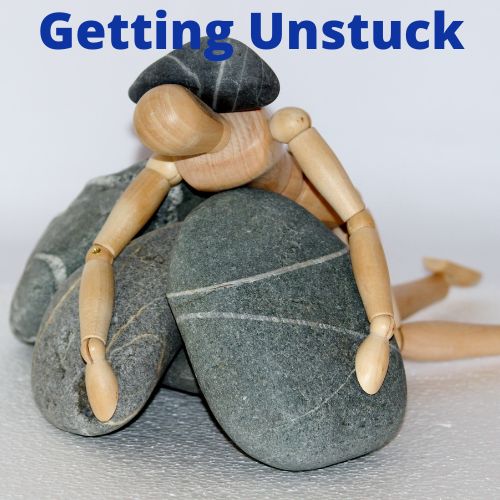
Getting Unstuck
- Once we see an obstacle in our path, we walk around that obstacle. Unfortunately we sometimes have difficulty. We often think we’re surrounded. How do you walk around obstacles? The answer lies in changing the way you think about the problem.
- Design thinking emphasizes that you always make sure you are working on the real problem. When you can’t find the answer, it is often because you are not asking the correct question.
- One of the main causes of losing sleep over a problem is that we think we are dealing with a question when in fact we are dealing with an answer (a solution) that turns out not to be a good fit to our actual problem.
- A way around this dilemma is to ask, “What would it do for me if I solved this problem?” The answer to this can then be converted into a new, more generative question.
- By changing the question, you alter your point of view and dramatically expand the number of possible solutions.
- Changing the question is often enough to lead to a satisfactory resolution and to make the original difficulty disappear.

Ways to Get Unstuck
Once you have a problem statement, there are many formal methods that can assist you in generating solutions.
- Hard work
- Create a supportive environment
- Relax
- Brainstorming
- Lists
- Meta-lists: lists that contain the names of things from which to make more detailed lists.
- Idea logs
- Humor
- Conversation
- Forced transformations: purposefully modifying your ideas to make the conventional into the unconventional.
- “What if?”: a great way to start a question during idea generation. What if there was no gravity? What if there was blast-off house paint?
- Working backward: Imagine that the problem has been solved, and then work back to the beginning. This way you can see what all the milestones are.
- Storyboards
- Mind maps: Mind maps are great for providing a broad understanding of how diverse parts relate to the whole.
- Diagram yourself: In this method you examine your own problem-solving process and strive to make it ambidextrous, meaning that you use both right-brain and left-brain activities equally.
Inspired by
Bernard Roth